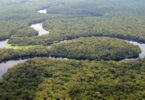As stewards of this planet, we often wonder: Is Earth healing?
In the face of climate change, habitat destruction, and pollution, many have questioned whether our collective efforts are making a difference. Yet, amidst the challenges, there are signs of hope that suggest our planet is on a path to recovery. This blog delves into the evidence of healing, the ongoing challenges we face, and the proactive steps we can take to ensure a sustainable future for all living beings.
Understanding the Healing Process
Healing the Earth involves restoring ecosystems, improving air and water quality, and revitalizing biodiversity. It’s a multifaceted process requiring global cooperation, individual action, and a commitment to sustainable practices.
1. Signs of Healing: Nature’s Resilience
a. Ecosystem Restoration Projects
Around the globe, ecosystem restoration projects are witnessing remarkable success. For example, in Costa Rica, aggressive reforestation efforts have increased forest cover from 21% in the 1980s to over 60% today. These initiatives not only combat carbon emissions but also restore habitats for countless species, creating a rich biodiversity that supports ecological balance.
b. Marine Conservation Efforts
The oceans, which cover over 70% of the Earth’s surface, are crucial for sustaining life. Marine protected areas (MPAs) have seen a significant increase in fish populations and coral health. The Great Barrier Reef has benefited from conservation efforts, resulting in a gradual recovery of coral ecosystems that were once devastated by bleaching events.
c. Wildlife Comeback Stories
Some wildlife populations are rebounding due to concerted conservation efforts. The gray wolf in Yellowstone National Park, once hunted to near extinction, has been successfully reintroduced, restoring balance to the ecosystem. Similarly, the American bison is making a comeback, with herds returning to their natural habitats due to protective legislation and breeding programs.
The Ongoing Challenges
While there are positive signs, several critical challenges continue to threaten the healing process:
1. Climate Change
Climate change remains the most significant challenge, driving extreme weather events, rising sea levels, and shifting ecosystems. The Intergovernmental Panel on Climate Change (IPCC) reports that limiting global warming to 1.5 degrees Celsius is crucial to preventing catastrophic impacts on ecosystems and human life.
2. Biodiversity Loss
According to the World Wildlife Fund, we have lost approximately 60% of global wildlife populations since 1970. Habitat destruction, pollution, and climate change contribute to this alarming trend, pushing many species toward extinction. Protecting biodiversity is essential for ecosystem stability, food security, and human health.
3. Pollution and Waste Management
Plastic pollution, particularly in oceans, is a growing concern. Over 11 million tons of plastic end up in the oceans each year, harming marine life and ecosystems. Additionally, air and water pollution continue to pose health risks to both humans and wildlife.
Taking Action: How We Can Help Heal the Earth
While challenges abound, there are many ways individuals and communities can contribute to the healing process:
1. Adopt Sustainable Practices
- Reduce, Reuse, Recycle:
- Implement a sustainable lifestyle by reducing waste, reusing materials, and recycling whenever possible. Choose products with minimal packaging to cut down on plastic waste.
- Support Renewable Energy: Transitioning to renewable energy sources like solar and wind power helps reduce greenhouse gas emissions and dependence on fossil fuels.
2. Engage in Conservation Efforts
- Participate in Local Initiatives: Join or support local conservation projects, such as tree planting, beach clean-ups, and wildlife habitat restoration.
- Advocate for Policy Change: Engage in activism by supporting policies that promote environmental protection, such as climate action plans and conservation legislation.
3. Educate Yourself and Others
- Learn About Local Ecosystems: Understanding the unique ecosystems in your area can inspire you to protect them. Attend workshops, read books, and participate in community programs focused on environmental education.
- Spread Awareness: Share information about environmental issues on social media, engage in discussions, and encourage others to take action.
The Power of Collective Action
The healing of the Earth is a shared responsibility. It requires collective action at local, national, and global levels. Communities, organizations, and governments must unite to create policies that prioritize sustainability, conservation, and environmental justice.
What Can We Gain?
- A Healthier Planet: By working together to heal the Earth, we ensure a thriving environment for future generations, rich with biodiversity and natural resources.
- Improved Quality of Life: Healthy ecosystems contribute to our well-being, providing clean air, water, and food. A balanced environment enhances mental and physical health, fostering a deeper connection to nature.
- Inspiration and Hope: Witnessing the Earth’s healing can inspire a sense of purpose and hope. It reminds us that positive change is possible when we act collectively and consciously.
Final Thoughts
The question, “Is Earth healing?” prompts reflection on our relationship with the planet. While we face significant challenges, the signs of recovery highlight the resilience of nature and the power of human action. By embracing sustainable practices, advocating for policy change, and participating in local conservation efforts, we can contribute to a healthier and more sustainable future.
Let us remain hopeful and proactive, recognizing that the journey to heal the Earth is ongoing. Together, we can nurture our planet, ensuring it thrives for generations to come.









